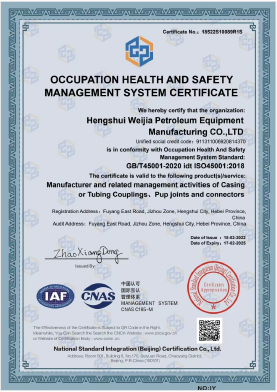- Afrikaans
- Albanian
- Amharic
- Arabic
- Armenian
- Azerbaijani
- Basque
- Belarusian
- Bengali
- Bosnian
- Bulgarian
- Catalan
- Cebuano
- Corsican
- Croatian
- Czech
- Danish
- Dutch
- English
- Esperanto
- Estonian
- Finnish
- French
- Frisian
- Galician
- Georgian
- German
- Greek
- Gujarati
- Haitian Creole
- hausa
- hawaiian
- Hebrew
- Hindi
- Miao
- Hungarian
- Icelandic
- igbo
- Indonesian
- irish
- Italian
- Japanese
- Javanese
- Kannada
- kazakh
- Khmer
- Rwandese
- Korean
- Kurdish
- Kyrgyz
- Lao
- Latin
- Latvian
- Lithuanian
- Luxembourgish
- Macedonian
- Malgashi
- Malay
- Malayalam
- Maltese
- Maori
- Marathi
- Mongolian
- Myanmar
- Nepali
- Norwegian
- Norwegian
- Occitan
- Pashto
- Persian
- Polish
- Portuguese
- Punjabi
- Romanian
- Russian
- Samoan
- Scottish Gaelic
- Serbian
- Sesotho
- Shona
- Sindhi
- Sinhala
- Slovak
- Slovenian
- Somali
- Spanish
- Sundanese
- Swahili
- Swedish
- Tagalog
- Tajik
- Tamil
- Tatar
- Telugu
- Thai
- Turkish
- Turkmen
- Ukrainian
- Urdu
- Uighur
- Uzbek
- Vietnamese
- Welsh
- Bantu
- Yiddish
- Yoruba
- Zulu
Understanding the Importance of Well Tubing and Casing in Oil and Gas Operations
Understanding Well Tubing and Casing in Oil and Gas Industry
In the oil and gas industry, the process of extracting hydrocarbons from the earth is complex and requires careful engineering and consideration at every stage. Two essential components that play a crucial role in this extraction process are well tubing and casing. Understanding these components is vital for anyone involved in the drilling and production of oil and gas wells.
What is Well Casing?
Well casing is a series of pipes that are inserted into the wellbore after drilling has taken place. The primary purpose of casing is to stabilize the wellbore wall, prevent the ingress of groundwater, and protect the integrity of the well. It acts as a barrier to prevent the surrounding rock and soil from collapsing into the well, which can lead to costly delays and hazards.
Casing is typically made of steel or plastic and comes in various sizes, which are determined by the diameter of the well. The casing is cemented in place to ensure that it remains secure and to provide additional support. The cementing process also seals the annular space between the casing and the wellbore, further protecting against the migration of fluids. Different sections of the casing may be designed for specific depths and conditions, including surface casing, intermediate casing, and production casing.
The Role of Well Tubing
Once the casing is in place, well tubing is inserted into the well to facilitate the flow of oil or gas to the surface. Tubing is a smaller diameter pipe that serves as the conduit for the hydrocarbons extracted from the reservoir. Unlike casing, tubing is not cemented in place; it is typically made of high-strength steel to withstand the pressure and corrosive nature of the fluids being transported.
Well tubing must be carefully engineered to meet the specific requirements of the well, including its depth, the type of fluids it will transport, and the expected pressures. The tubing can be designed for various operational conditions, and it plays a crucial role in optimizing the production of hydrocarbons. For instance, the tubing design may account for factors such as thermal expansion, corrosion resistance, and mechanical strength.
well tubing and casing

Importance of Well Tubing and Casing
The successful extraction of oil and gas heavily relies on the proper installation and maintenance of well tubing and casing. Poor design or installation can lead to a host of problems, including well blowouts, leaks, and environmental contamination. Such issues not only jeopardize safety but can also result in substantial financial losses.
The integrity of casing and tubing has a direct impact on the overall efficiency of the production process. Regular monitoring and inspection are crucial to ensure that any wear or damage is detected early, allowing for timely maintenance or replacement. This is particularly important in older wells, where the risk of corrosion and degradation increases over time.
Future Trends
As the oil and gas industry evolves, so do the technologies associated with well tubing and casing. Advancements in materials science have led to the development of more resilient casing and tubing options, enhancing their lifespan and performance. Additionally, the integration of smart technology, such as sensors and monitoring systems, allows operators to obtain real-time data regarding the condition of wellbore and production systems.
Environmental considerations are also shaping the future of this industry, with ongoing research aimed at minimizing the ecological footprint of drilling activities. Innovations that improve the sealing capabilities of casing and tubing can help reduce the risk of leaks, ensuring better protection of surrounding ecosystems.
Conclusion
In summary, well tubing and casing are fundamental components of oil and gas extraction processes. Their proper design, installation, and maintenance are critical to ensuring the safety, efficiency, and environmental integrity of drilling operations. As the industry progresses, continued advancements in technology and materials will play a significant role in optimizing these essential elements of well construction and production. Understanding these components provides a solid foundation for anyone looking to enter or engage with the oil and gas sector.
-
Well Casing Extension Couplings – Applications and InstallationNewsJun.06,2025
-
Types of Crossover Subs in Drilling & CompletionNewsJun.06,2025
-
Key Features of High-Quality Tubing Pup JointsNewsJun.06,2025
-
Installation and Maintenance Tips for Steel Couplings for PipeNewsJun.06,2025
-
How to Select the Right Pup Joint for Oil & Gas OperationsNewsJun.06,2025
-
Applications of Stainless Steel Pipe CouplingsNewsJun.06,2025







